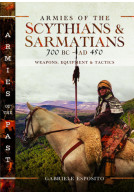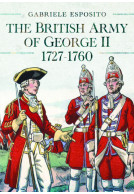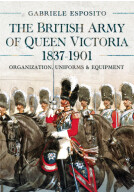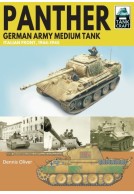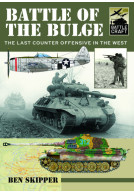Napoleon's Infantry (Hardback)
French Line, Light and Foreign Regiments 1799–1815
Imprint: Pen & Sword Military
Pages: 160
Illustrations: 84 colour illustrations
ISBN: 9781399008310
Published: 1st August 2022
(click here for international delivery rates)
Need a currency converter? Check XE.com for live rates
This volume covers the infantry units of Napoleon’s Imperial Army, during the crucial years 1800-1815. When the future Emperor assumed control of France, the infantry of his army was disorganized and poorly equipped; it lacked discipline and was trained in a quite old-fashioned way. Napoleon acted very rapidly to resolve the major problems of his foot troops, by giving them a new structure and by teaching them new tactics. By 1805, the French infantry was without a doubt the best in the world in terms of combat capabilities. The book will cover all the categories of units that were part of Napoleon’s infantry: line regiments, light regiments, foreign corps and special corps. It is not always realized that the French infantry of 1800-1815 included large numbers of foreign soldiers and even an Irish Legion; all these little-known corps are taken into consideration, together with several special corps like Corsican light infantry and mountain infantry. Gabriele Esposito provides a complete guide to the French infantry of Napoleon, illustrated with rare contemporary uniform plates that have never been published before.
This is a very impressive collection, and the author has found good examples to illustrate most of the uniforms described here.
History of War
Read the Full Review Here
4 out of 5 Stars
Army Rumour Service (ARRSE)
This is not an exhaustive history of Napoleonic French Infantry, nor does it pretend to be...this is an excellent resource and pleasing to leaf through too; whilst mostly simple some of the illustrations are gorgeous.
Read the Full Review Here
This is a beautifully presented book, profusely illustrated with numerous high quality colour plates that, to quote the author’s introduction, presents “a detailed overview of the history, organization and uniforms of the French infantry during the Napoleonic Wars.”
Arthur Harman, Miniature Wargames
The book is divided into seven chapters: French Infantry 1789-92; French Infantry 1793-99; French Infantry Uniforms 1789-99; Line Infantry 1800-15; Light Infantry 1800-15; Special Infantry Units, and Foreign Infantry Units.
The texts of chapters four and five are subdivided into two sections on Organization and Uniforms and equipment. The last two chapters are divided into short sections devoted to the organization and uniforms of the individual units.
All illustrations, many already familiar to readers interested in the Napoleonic Wars from black and reproductions in other books, are from the Digital Collections of the New York Public Library and in the public domain. It is good to see them in full colour, but it is regrettable that the captions provided mention neither the original artists nor the dates of publication to help readers judge the accuracy and reliability of their depictions of the uniforms. The captions under the illustrations do not offer any discussion on these issues.
Sometimes the illustrations are not placed appropriately in relation to the text. For example, a reproduction of two plates by Richard Knotel, one showing fusiliers in 1805, 1806 and 1810, together with a fusilier in the ‘Bardin’ 1812 pattern uniform, the other grenadiers of the same periods, appear in the section titled The French Infantry 1789-92! I shall forbear from giving other examples.
There are no photographs of surviving items of uniform, equipment or weapons.
Nor are there any tables showing individual unit distinctions or details of the rank insignia of officers and non-commissioned officers; readers must hunt for this sort of information in the section of the text in each chapter titled Uniforms and equipment as there are no other subheadings.
The brief, one-page bibliography lists seven Osprey books, two by Blandford Press and three by Editions Heimdal; the remainder, with one exception, are modern works published within the last twenty-five years, not primary sources.
A short, one-page index concludes the book.
Had this book been published back in the days of my youth, when Napoleonic wargamers could only turn to the two volumes of L’Uniformes et Les Armes Des Soldats Du Premier Empire by Liliane and Fred Funcken (Casterman, 1968) for information on uniforms, it would have been greeted with, and would have deserved, great praise. The ever-increasing amount of uniform information for the French army of the Napoleonic Wars being published today by researchers such as Paul L. Dawson renders this book’s apparently uncritical approach towards the colour plates seem less appropriate.
However, the book does certainly contain sufficient information to enable Napoleonic wargamers fielding French armies of small-scale figures to paint their troops to a perfectly acceptable standard of accuracy for their tabletop battles. It would be a perfectly good reference for a wargamer who did not already possess other books on French army uniforms, and many will believe it a worthwhile purchase simply to possess such high quality reproductions of the colour plates.
Whether it may be re-enactors, many modellers and wargamers will just love the colour references for painting French Napoleonic uniforms, most of which have not been published before. A super reference.
Military Model Scene
Read the full review here
An attractive, informative and enjoyable addition to the Nappy buff's uniformology library.
A Question of Scale
As featured in
The Bookseller
A very useful and concise description of the structure and uniforms of Napoleon’s armies. The illustrations are well known being in the public domain but they are well curated in this book to provide a quick reference source.
Michael McCarthy
Michael McCarthy. Battlefield Guide
About Gabriele Esposito
Gabriele Esposito is an Italian researcher and a long-time student of military history, whose interests and expertise range widely over various periods. Most of his recent studies have been dedicated to the reconstruction of the organization, functioning and tactics of the armies across history; in each of his publications there is always some relevant space dedicated to the 'material culture'of the various armies taken into account and - more in particular - to the empirical science known as 'uniformology'. Gabriele is the author of numerous books on armies and uniforms and is a regular contributor to many specialized magazines in Italy, France, Netherlands and UK. His many previous works include Armies of Early Colonial North America 1607-1713; Armies of the Late Roman Empire 284-476; Armies of the Hellenistic States 323 BC to AD30; Armies of Celtic Europe 700 BC-AD 106; Armies of Ancient Greece, circa 500 BC to 338 BC; and The Macedonian Army of Philip II and Alexander the Great 359-323 BC, all published by Pen & Sword since 2018. He lives in southern Italy, near the ancient battlefield of Beneventum.








